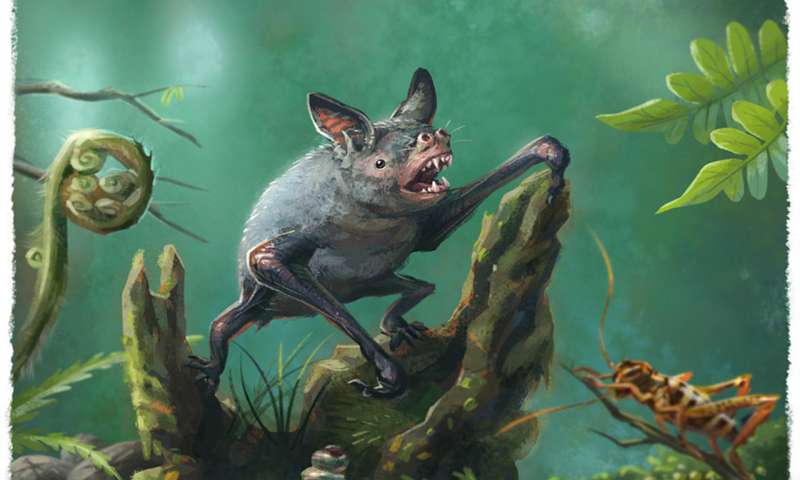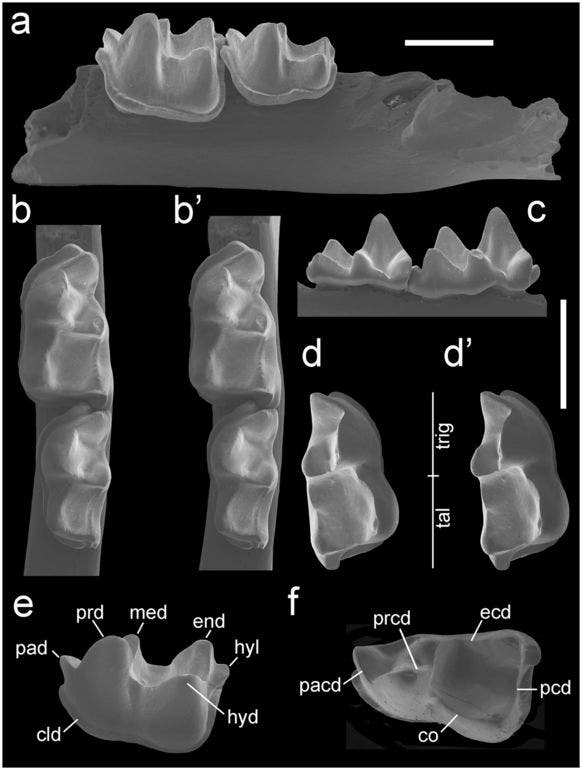Fossils of a giant burrowing bat, about three times larger than today’s average bat, were discovered by paleontologists in New Zealand. The ancient species belongs to a lineage that used to flourish in the southern landmasses of Australia, New Zealand, South America and possibly Antarctica.

An artist’s impression of a New Zealand burrowing bat, Mystacina robusta, that went extinct last century. Credit: Gavin Mouldey.
Judging from its teeth and bones, Vulcanops jennyworthyae — named so after researcher Jenny Worthy who found the fossils — likely weighed an estimated 40 grams. Even at this modest weight, it’s the biggest burrowing bat that we know of.
Burrowing bats not only fly but also scurry about on all fours. It’s common to see them foraging for animal and plant food on the forest floor and along tree branches. Although they also lived in Australia, nowadays, burrowing bats can only be found in New Zealand.
If it was anything like today’s burrowing bats, Vulcanops j. must have had a broad diet comprising of both plants and animals. Burrowing bats commonly chase down insects and other invertebrates like weta and spiders, but also consume fruit, flowers, and nectar. Due to its large size and specialized teeth, Vulcanops j. should have been capable of eating even more plant food as well as small vertebrates — a diet more like that of its South American cousins.

Vulcanops jennyworthyae likely enabled the giant extinct bat to eat a broader diet than its cousins. Perhaps it also munched on small vertebrates. Credit: Scientific Reports.
“Burrowing bats are more closely related to bats living in South America than to others in the southwest Pacific,” says study first author and University of New South Wales Professor Sue Hand.
They are related to vampire bats, ghost-faced bats, fishing and frog-eating bats, and nectar-feeding bats, and belong to a bat superfamily that once spanned the southern landmasses of Australia, New Zealand, South America and possibly Antarctica.
Around 50 million years ago, all of these landmasses were part of the same giant continent called Gondwana. The climate was also wildly different with average global temperatures up to 12 degrees Celsius higher than today. Antarctica, for instance, was covered in lush forests and was ice-free. After tectonic activity fragmented these landmasses, Australasia’s burrowing bats became isolated from their South American relatives.
“The fossils of this spectacular bat and several others in the St Bathans Fauna show that the prehistoric aviary that was New Zealand also included a surprising diversity of furry critters alongside the birds,” said study co-author, Associate Professor Trevor Worthy of Flinders University.
Vulcanops’ lineage became extinct not long after the early Miocene, when the climate in New Zealand took a sudden swing, becoming far colder and drier. The environmental changes left many species vulnerable — and Vulcanops was not alone. Numerous species couldn’t adapt, including crocodiles, terrestrial turtles, flamingo-like palaelodids, swiftlets, several pigeon, and non-flying mammals.
Today, only two bat species comprise the entire native land mammal fauna in New Zealand. All other land mammals in the country have been introduced by humans over the past 800 years.
The findings appeared in the journal Scientific Reports.










